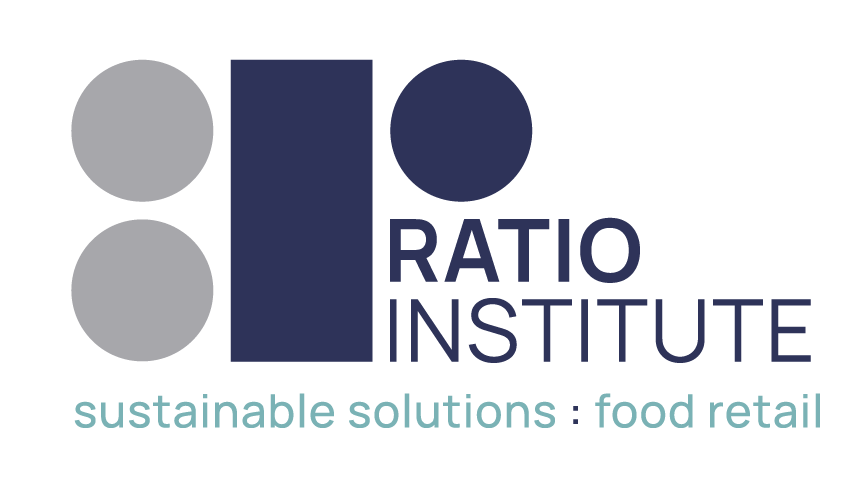Most people don’t know this, but the typical neighborhood supermarket uses as much energy as over 140 average-sized homes. Food retail facilities use more energy per square foot than just about any other commercial building type, and the industry represents a massive opportunity to reduce carbon emissions for nearly every community in America. While a lot of effort is being focused on decarbonizing the country’s housing stock, we really can’t ignore the proverbial elephant in the room – the local supermarket.
In addition to being a massive opportunity to decarbonize, energy efficiency in supermarkets represents an absolute slam dunk investment for grocery store operators. For each dollar that a grocer invests in energy efficiency, they impact their company’s bottom line as if they’d raised their sales by eighteen dollars. A typical supermarket must generate $4.5 million in sales each year just to pay their electric bill. Imagine the potential profit, let alone the cost savings they could pass on to consumers, through investing in the abundant energy efficiency opportunities available to them.
No-Brainer Solutions to Carbon Emissions
Many tried-and-true opportunities have been identified in food retail energy efficiency that represent great options for almost any operator and most of these solutions just make common sense. For example, you’d never leave your home refrigerator door open all the time, so why would a grocery store be any different? Yet, today, most supermarkets have open refrigerator cases all over the store. With refrigeration representing about 50% of a typical retailer’s electric bill, it’s an easy win to start by ‘closing in’ the display cases with glass doors. The simple retrofit of glass doors on open display cases not only makes older displays look new but saves a whopping 68% of the energy required to operate them. Indeed, glass door retrofits can save about 15% of all energy used in a grocery store, equivalent to almost $700,000 each year in sales.
In addition to glass door retrofits, grocers can take advantage of the huge strides that have been made in LED lighting technology. A typical supermarket retrofit from older fluorescent technologies to LED’s not only improves light quality and reduces maintenance costs but will cut the electric costs for lighting the store in half. At a US average utility cost of 10.6 cents/kWh for grocery, this savings equates to over $25,000 in direct bill savings or almost half a million dollars annually in sales equivalent.
Next-Level Carbon Emissions Reductions
Once a retailer has completed all the ‘no-brainer’ energy efficiency options like glass doors or LED lighting, where do they go from there? As energy prices continue to rise and the need for carbon reductions continues to climb, it’s no longer possible to rely solely on simple widget-based replacement projects to gain the next tier of energy efficiency. Instead, retailers must look to comprehensive and integrated solutions to drive further savings. It’s the development of these ‘whole house’ approaches that will unlock additional savings, drive grocery store emissions down and spur innovation in buildings. While at first glance it may appear to cost more to take an integrated view to grocery energy efficiency, the approach offers many benefits. Taking the glass door retrofit project from above as an example, the project itself impacts many other systems in the store. While one could probably get away with just retrofitting the doors, there are synergies to take advantage of including reduced heating needs during winter, reduced equipment needs due to lower refrigeration demands and a host of other effects that allow ‘right sizing’ of equipment, further reducing energy use and improving occupant comfort.
An integrated view is also necessary to take advantage of the host of energy savings opportunities beyond simple efficiency. These solutions, such as utility demand response programs, actually pay retailers to reduce energy use during certain critical times. To take full advantage of these programs, grocers require the right sized equipment and appropriate monitoring and controls. Moreover, a host of new technologies are becoming available that can provide retailers with energy cost savings through managing the building’s interactivity with the electric grid. These solutions, from rooftop solar to battery storage, may impact the amount of energy a grocer buys from the utility or may just impact when the electricity is bought. Regardless, solutions need to be properly sized and part of an integrated energy plan for the building.
Ride the Wave of Opportunity
The future is bright for driving continued energy efficiency in the food retail sector. Likewise, a swift and steady improvement in food retail energy management will be required to meet corporate climate goals and drive profitability. The ever-changing technological environment offers many new and promising solutions and retailers, like other businesses, will need to stay abreast of changes. For further insights on food retail energy efficiency and on developing the next generation of solutions, follow our organization, Ratio Institute which is focused on helping the food retail industry make the transition to a sustainable and carbon free world.
Additionally, the industry is quickly running into talent issues as more and more complex approaches to energy efficiency are developed and the pace of change continues to accelerate. It’s a great time for professionals to get involved in this exciting and dynamic space and Presidio Graduate School, through partnerships with organizations like Ratio Institute is developing the next generation of leaders who will drive these solutions in this critical and yet somewhat overlooked industry.

